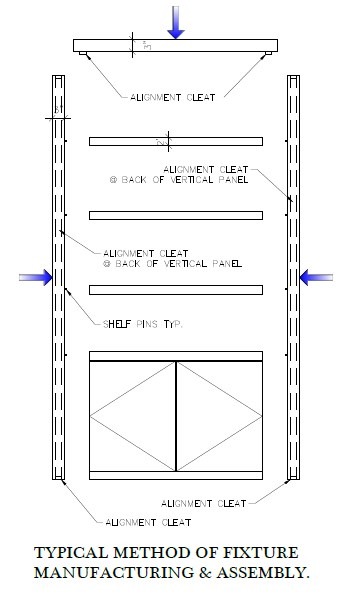The Importance of Quality Millwork and Casework Shop Drawings in the Evolving Industry

Introduction
Over the past 13 years, the commercial millwork industry has experienced significant transformation. Sustainability practices, technological advancements, modern design trends, and increased customization have reshaped the industry. Despite overall growth, the industry faces challenges such as economic downturns, labor shortages, and integrating smart technology.
Industry Trends
Sustainability and Green Building There’s a growing demand for eco-friendly materials, leading to the use of certified wood, recycled materials, and low-VOC finishes.
Technological Advancements CNC machinery, CAD software, and BIM have improved precision, efficiency, and customization in millwork production. Automation and robotics have further streamlined manufacturing processes.
Modern Design Trends The industry has shifted towards clean, functional aesthetics and the integration of mixed materials like wood, metal, glass, and stone.
Market Growth The industry has grown alongside the construction and real estate markets. Urbanization and commercial real estate development have spurred demand for high-quality millwork. Partial proof is the growth of the Procore Network.
Labor and Skill Shortages The industry faces challenges with labor shortages and a lack of skilled craftsmen, driving the need for training programs and apprenticeships.
Flexibility and Customization There is a growing demand for flexible, modular, and customized millwork solutions to meet specific brand identities and functional needs.
Decline in Traditional Shop Drawings
Despite these advancements, the last eight years have seen a decrease in demand for traditional millwork and casework shop drawings due to several factors:
Technological Advancements and Automation Improved design software and CNC machines reduce the need for manual shop drawings.
Design-Build and Integrated Project Delivery (IPD) These methods integrate design and construction, minimizing the need for separate shop drawings.
Standardization and Modular Construction Increased use of standardized components reduces the demand for custom shop drawings.
Efficiency Improvements A focus on cost reduction and efficiency has led to fewer detailed shop drawings.
Economic Pressures Budget constraints have led companies to cut back on extensive shop drawings.
Changes in Project Scope Smaller renovation projects require fewer shop drawings than large-scale developments.
Skill Shortages A shortage of skilled drafters has decreased reliance on comprehensive shop drawings.
Improved Communication and Coordination Enhanced digital tools reduce the need for detailed shop drawings.
Importance of Quality Millwork and Casework Shop Drawings
Despite these trends, the need for quality millwork shop drawings and casework shop drawings remains crucial. AWI Standards-based High-quality shop drawings ensure precision, coordination, and clarity throughout the construction process. They play a vital role in translating design intent into reality, especially for custom and complex projects.
Reinforcing the Need for Quality Shop Drawings
In an era of rapid technological advancements and efficiency improvements, the role of detailed millwork shop drawings and casework shop drawings cannot be underestimated. They provide a critical bridge between design and production, ensuring that every detail is meticulously planned and executed. Quality shop drawings help avoid costly errors, streamline communication, and enhance overall project coordination.
Increased Market Demand
As the market evolves, we see an increased demand for millwork shop drawings and casework shop drawings. The rise of bespoke and customized solutions, along with the need for precise execution in high-end commercial projects, underscores the importance of detailed shop drawings. They are essential for maintaining the highest standards of craftsmanship and ensuring that the final product aligns with the client’s vision.
Conclusion
While the commercial millwork industry continues to evolve, the enduring importance of quality millwork shop drawings and casework shop drawings remains clear. They are indispensable for delivering exceptional millwork and casework, ensuring precision, and maintaining the integrity of the design throughout the construction process. As the market demands more customized and complex solutions, the need for detailed shop drawings will only continue to grow.
By focusing on quality millwork shop drawings and casework shop drawings, businesses can ensure they meet the high standards required in today’s competitive market.

